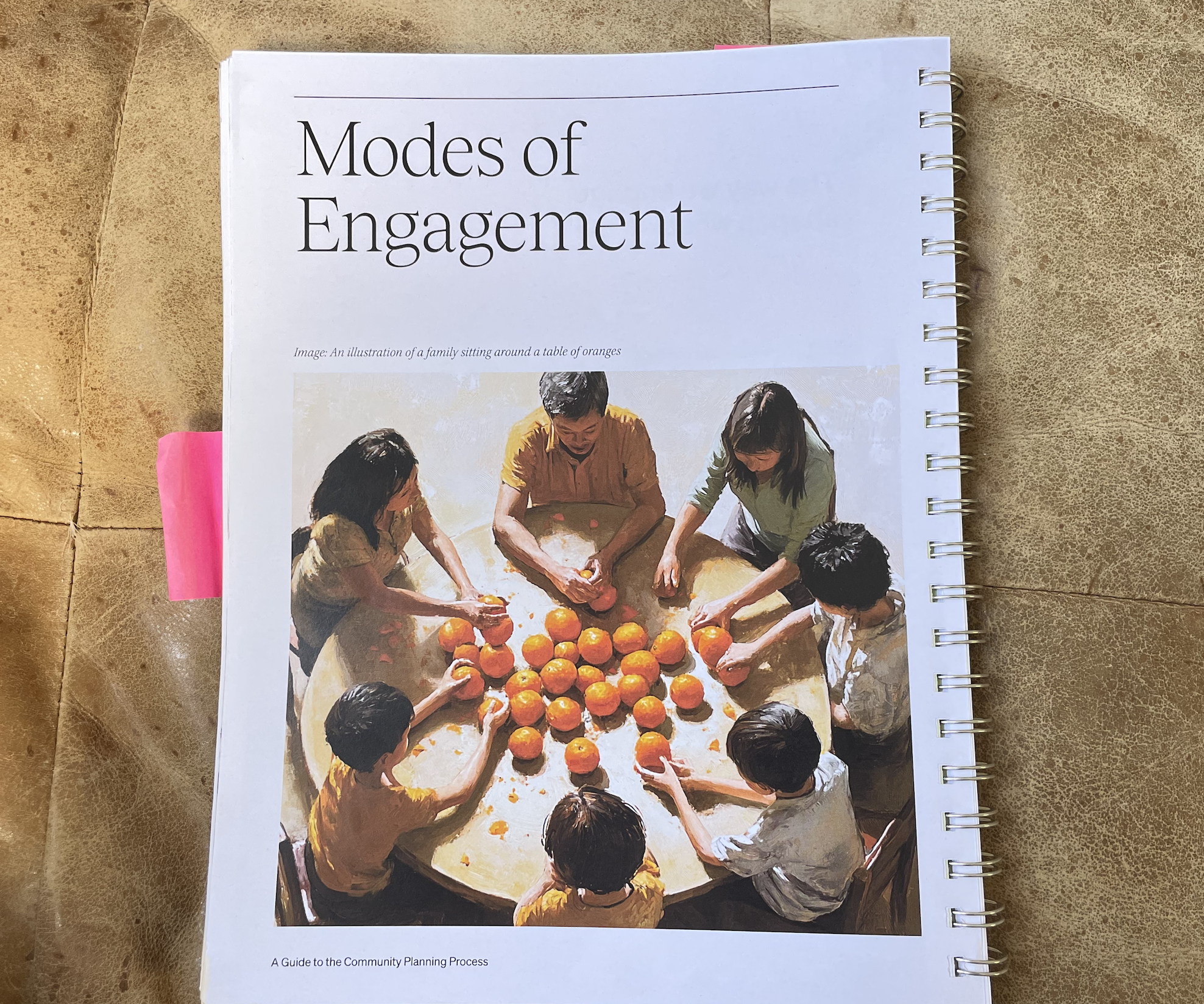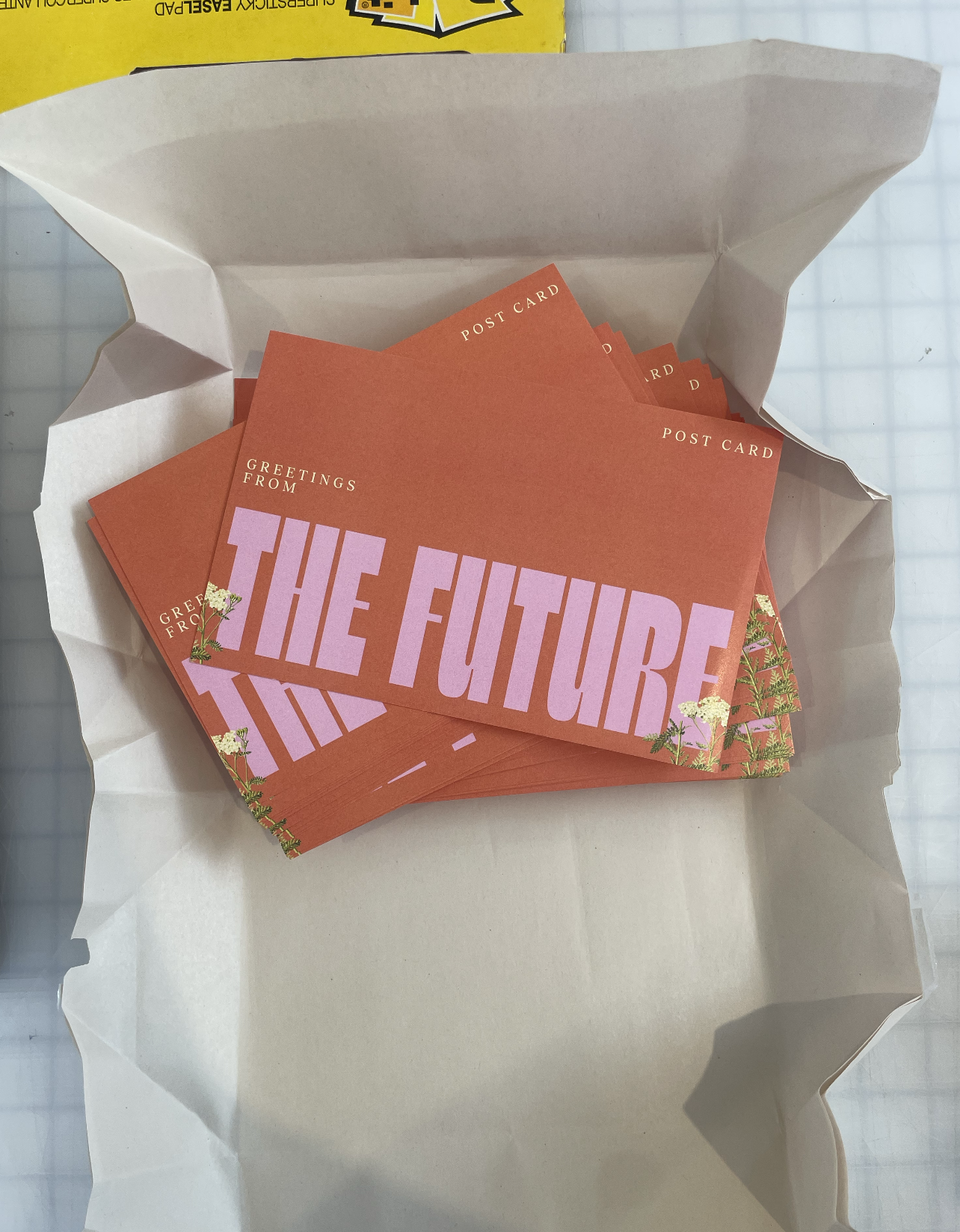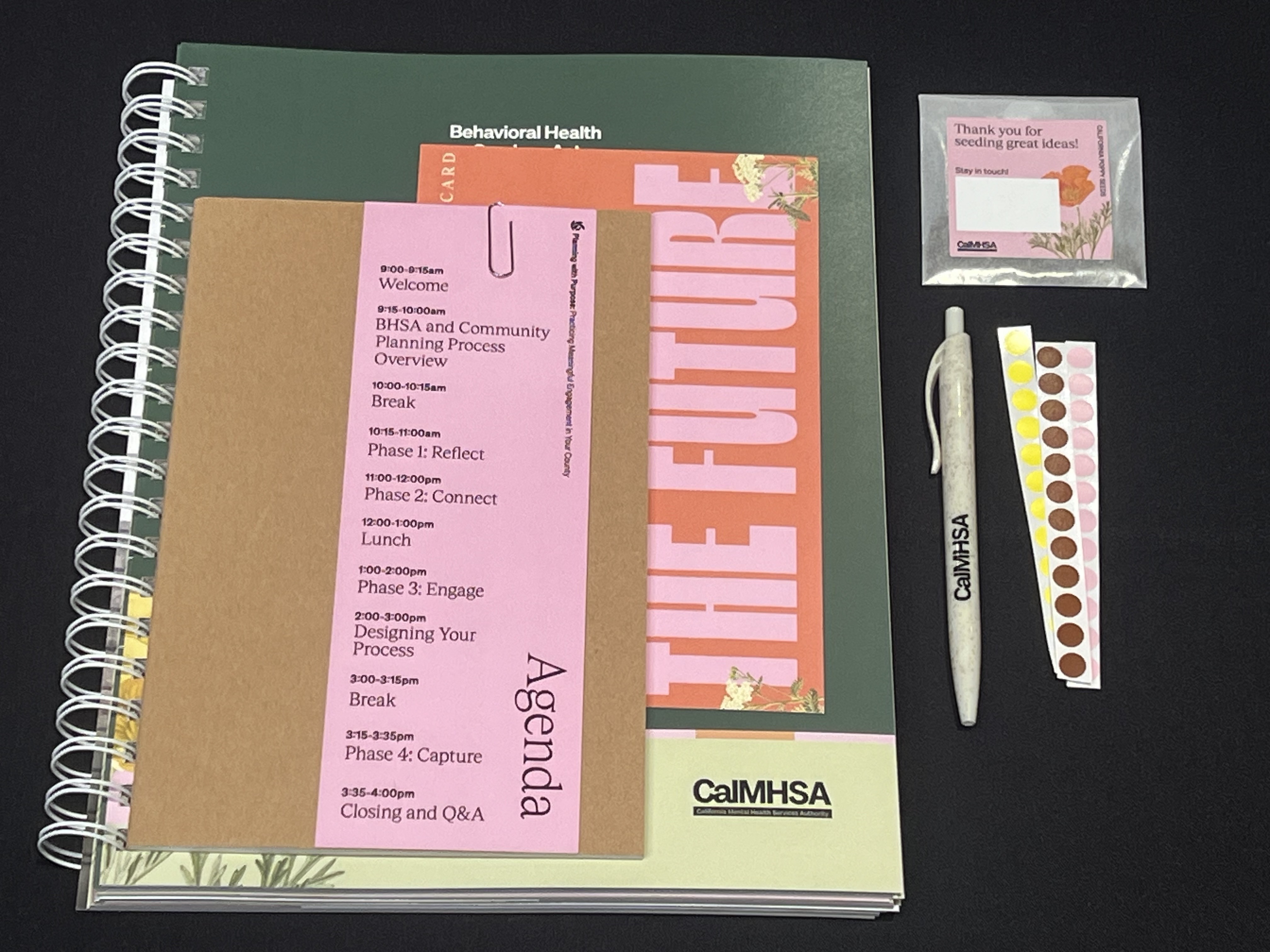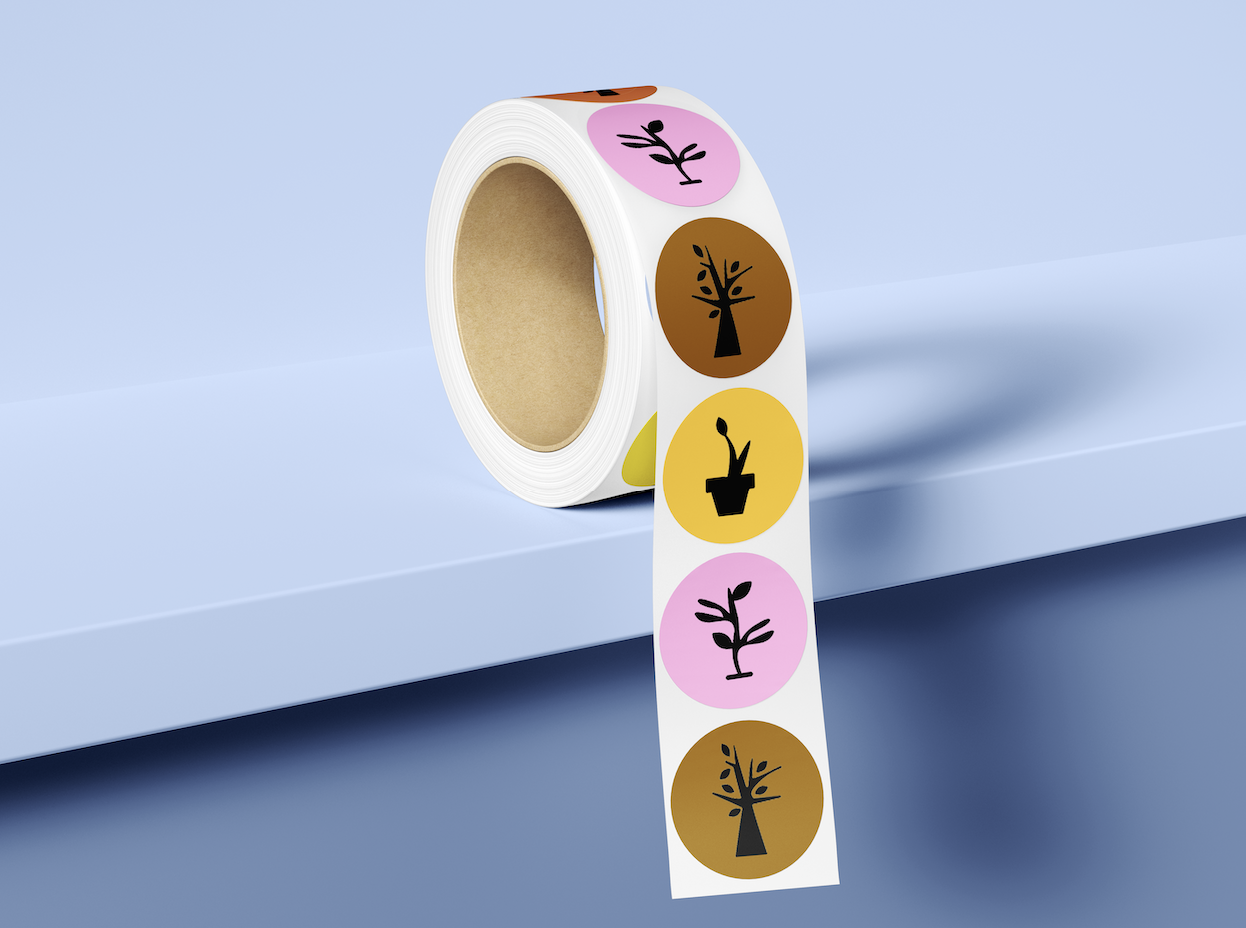CalMHSA
Client: The State of California
Creative Direction, Design Research, Learning Experience Design
THE CHALLENGE
In the wake of California's passage of the Behavioral Health Services Act (BHSA) under Proposition 1, CalMHSA was on a mission to support county leaders in navigating the changes. The stakes were high: County Behavioral Health Plans must now navigate new planning mandates, reallocate up to 30% of their budgets toward housing interventions, and engage communities meaningfully as they develop an Integrated Plan for how they will spend their funds.
Yet, for counties — urban, suburban, rural, and frontier alike — the how remained unclear. How do they meet complex state mandates without losing the trust of providers and communities? How can they ensure engagement is meaningful rather than performative? How can they align urgent state requirements with local nuance?
CalMHSA knew counties needed more than policy language — they needed a simple process complete with tools for transparency, trust-building, and inclusion. Our shared design goals were to:
- Simplify Complex Processes: Provide counties with clear, human-centered resources to navigate budget planning and community engagement under Prop 1.
- Engage Communities: Support counties in bringing community voices into the process in ways that are authentic, effective, and inclusive.
- Build Leadership Capacity: Equip behavioral health leaders with actionable tools and methods to confidently lead this transformation.
- Ensure Statewide Relevance: Create solutions that work for all 58 counties — reflecting their diverse geographies, populations, and ways of working.
IDEO's central design question became:
How might we empower counties to engage their communities in shaping behavioral health priorities that meet Prop 1 mandates — without compromising the trust and relationships they've spent years building?
DESIGN JOURNEY
IDEO partnered directly with county behavioral health directors and leaders across seven counties — representing a wide mix of geographies and demographics. These conversations revealed a critical truth: trust wasn't just a value, it was infrastructure. Without it, the shift in funding posed the risk of fragmenting the very ecosystems that keep people well.
Leaders wanted their best practices to be honored and shared. They wanted tools that felt practical and real — not theoretical or top-down. They wanted materials that reflected the heart and hustle of their work.
From these insights, the IDEO team designed a simple, repeatable, and adaptable community planning process with tools that would help counties execute that process:
- Every tool had to help protect or build *trust*— with community members, with providers, with peers.
- Every principle had to be practical — applicable across vastly different county sizes and structures.
- Every design choice had to feel like it came from within the field, not outside of it.
We embedded personal stories, highlighted real case studies, and ensured everything we created could flex for local context. We lifted up voices, language, and visuals that made the process feel human and hopeful.
DESIGN OUTCOMES
The result? A statewide Planning Guidebook unlike anything counties had seen before.
The guidebook:
- Showcased Real Practices: Uplifted real examples from county leaders already doing this work with heart and care.
- Felt Deeply Human: Designed with vibrant photography (from freelance photographers who captured behavioral health in action) and storytelling, the guidebook celebrated the dignity of the work.
- Equipped Counties with Tools: Included worksheets, planning frameworks, and checklists that teams could tailor and take into action immediately.
- Reflected Statewide Voices: Represented a wide spectrum of counties, building solidarity through shared learning.
Its resonance was immediate. So much so that CalMHSA hosted a statewide convening for county leaders to learn, share, and prepare to implement Prop 1 together.
THE IMPACT
130 county leaders from 44 counties came together for a hands-on learning workshop — walking out with clear next steps and a sense of connection to others navigating the same path.
The guidebook and the convening helped counties feel empowered, rather than overwhelmed. It signaled that they weren't just recipients of a mandate — they were co-authors of California's behavioral health transformation.

















